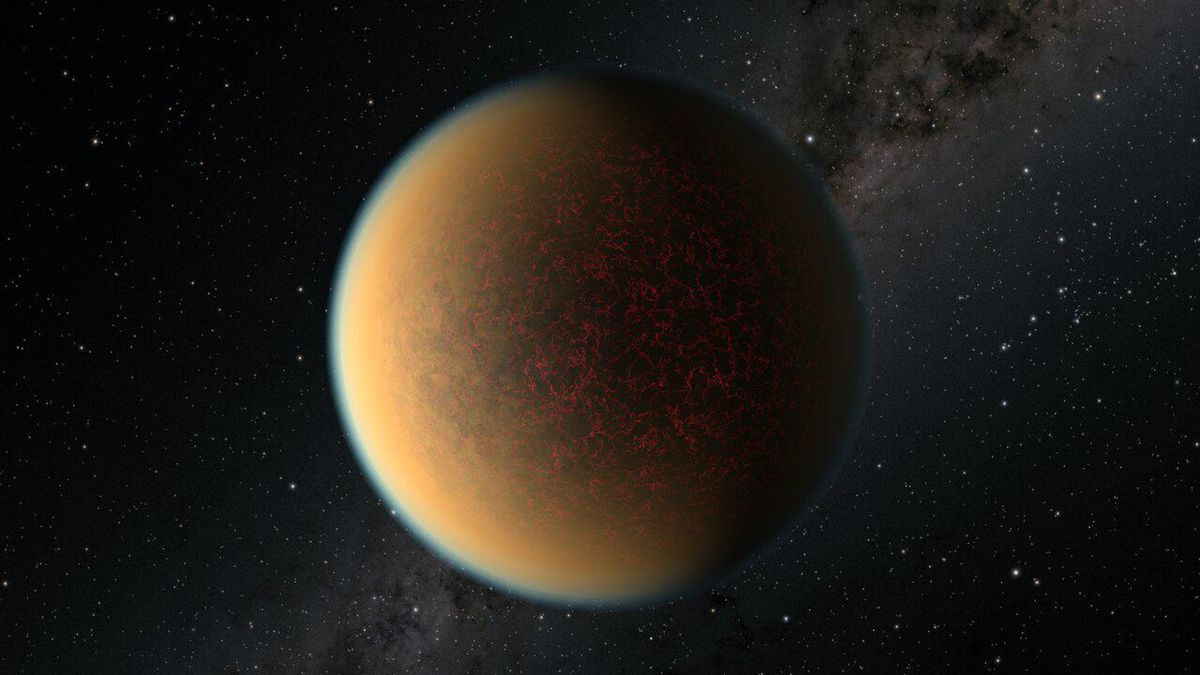
This image is an artist’s impression of the exoplanet GJ 1132 b. For the first time, scientists … [+]
NASA, ESA, and R. Hurt (IPAC/Caltech)
Can planets that become uninhabitable later become habitable again? After being stripped to its core by the intense heat of its star, an exoplanet 41 light-years distant is showing signs of gaining a second atmosphere—through volcanic activity.
Called GJ 1132 b, the planet was studied by NASA’s Hubble Space Telescope for a paper to be published soon in The Astronomical Journal.
Said to have tantalizing parallels to Earth, here’s everything you need to know about GJ 1132 b‚ a once-watery planet with a similar density, size, and age to Earth.
What and where is GJ 1132 b?
GJ 1132 b is a 4.5 billion years old exoplanet that orbits a red dwarf star 41 light-years from the Solar System. It completes one orbit of its star every 1.5 days from very close to the star. As well as once having a hydrogen-dominated atmosphere, the team’s work also suggests that GJ 1132 b and Earth now have similar atmospheric pressure at the surface.
Its theorized loss one atmosphere and gaining of a new one may have huge consequences in the search for an Earth 2.0—and possible life outside the Solar System.
What happened to GJ 1132 b
From its primordial beginnings as a bigger-than-Earth gaseous “sub-Neptune” world with a thick atmosphere of hydrogen and helium, GJ 1132 b would appear to have been stripped of it by intense radiation from its host star to become a bare core about the same size and density as Earth.
Now it’s regenerating a second atmosphere—and that’s a huge surprize to astronomers.
“We first thought that these highly radiated planets would be pretty boring because we believed that they lost their atmospheres,” said team member Raissa Estrela at the Jet Propulsion Laboratory (JPL) at the California Institute of Technology in Pasadena, California, USA. “But we looked at existing observations of this planet with Hubble and realised that there is an atmosphere there.”

Pictured here is the region around the host star of the exoplanet GJ 1132 b.
ESA/Hubble, Digitized Sky Survey (Acknowledgement: Davide De Martin)
A new volcanic atmosphere?
Hubble has just uncovered a secondary atmosphere around GJ 1132 b. Rich in hydrogen, hydrogen cyanide, methane and ammonia—and with a smog-like haze of hydrocarbons—the “new” atmosphere around GJ 1132 b has puzzling origins.
The paper theorizes that some of the original atmosphere’s hydrogen may have been absorbed into the planet’s molten magma mantle. Now it’s being blasted back out by volcanoes to form a new atmosphere.
The discovery is based upon a combination of observations and inference through computer modeling.
“This second atmosphere comes from the surface and interior of the planet, and so it is a window onto the geology of another world,” said team member Paul Rimmer of the University of Cambridge in the UK. “A lot more work needs to be done to properly look through it, but the discovery of this window is of great importance.”

This plot shows the spectrum of the atmosphere of an Earth sized rocky exoplanet, GJ 1132 b, which … [+]
NASA, ESA, and P. Jeffries (STScI)
Why a planet with a ‘regenerated’ atmosphere is important
“How many terrestrial planets don’t begin as terrestrials? Some may start as sub-Neptunes, and they become terrestrials through a mechanism that photo-evaporates the primordial atmosphere. This process works early in a planet’s life, when the star is hotter,” said lead author Mark Swain of JPL. “Then the star cools down and the planet’s just sitting there. So you’ve got this mechanism where you can cook off the atmosphere in the first 100 million years, and then things settle down. And if you can regenerate the atmosphere, maybe you can keep it.”
Why GJ 1132 b is so hot
For a planet or moon to be geologically active there needs to be “tidal heating”—friction—created when energy from its orbit and rotation is dispersed as heat inside. The squeezing and stretching keeps the mantle liquid.
A similar scenario plays out at Io, a volcanically active moon around Jupiter, where a tidal tug-of-war from Jupiter and its neighboring moons makes it the most volcanically active world in the Solar System. What’s happening on Io now is comparable to what happened in Earth’s past, such as the giant outpourings of lava that are associated with four out of five mass extinctions.
Wishing you clear skies and wide eyes.
This article is auto-generated by Algorithm Source: www.forbes.com


